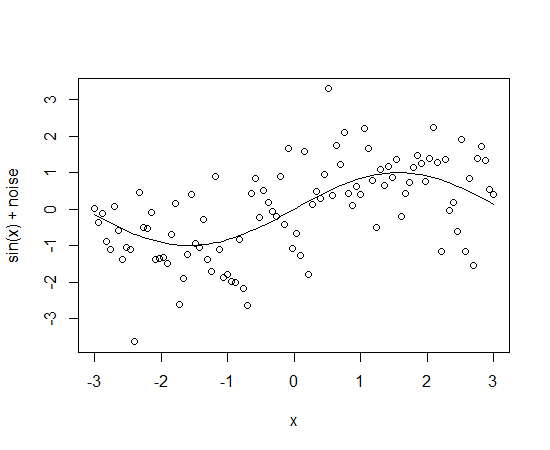I consider myself a wonk, although I am comfortable with the title nerd as well. And it is a good time to be a wonk: Nate Silver’s pinpoint polling analysis stole the show on November 6, and the Washington Post’s Wonkblog regularly blows me away with its ability to make compelling reading out of a deep dive into specialized technical content.
Nerds have risen to prominence in the past, but always in a quaint and campy way. This is different. The quant revolution, as it is being called, is an illustration of data wonkery cuttting through the obfuscation that so often clutters our public discourse, finding the signal within the noise to better inform and serve the public interest.
 We at the Union of Concerned Scientists are heavy into this brand of public interest wonkery, and in this role we frequently confront technical arguments made to hide the signal rather than illuminate it. It is all too common to find industry-funded experts throwing up a maze of technical arguments to push for outcomes that would not be supported if the public really understood what was happening.
We at the Union of Concerned Scientists are heavy into this brand of public interest wonkery, and in this role we frequently confront technical arguments made to hide the signal rather than illuminate it. It is all too common to find industry-funded experts throwing up a maze of technical arguments to push for outcomes that would not be supported if the public really understood what was happening.
The latest example of this is occurring in an ongoing debate about the best way to account for the timing of lifecycle emissions from biofuels and bioenergy.
Accounting for biofuels 101
Accounting for lifecycle heat-trapping emissions from biofuels and bioenergy is tricky, because it is not just burning the fuel that produces emissions, but also the changes in carbon taken up and stored by cropland and forests. Forests in particular absorb and store a huge amount of carbon, and when production of biofuels expand, we need more cropland, which can mean less forest. This needs to be accounted for in determining the lifecycle climate cost of a particular type of biofuel.
The question of timing enters into it because by cutting down more forests to expand production of biofuels, we are increasing emissions now but potentially reducing emissions from fossil fuels over the longer term. In the long run the emissions avoided by switching to biofuels could theoretically pay back the extra emissions from deforestation, but as a famous economist once said, “in the long run, we are all dead.” The question is: How long can we wait for the benefits of biofuels to repay the cost of the lost forests?
Playing the waiting game
This question has already been examined carefully by state and federal regulators, as well as the European Union. (I participated as a peer reviewer in the U.S. processes.) They considered timeframes as long as 100 years, and after extensive technical review, they all agreed on a 20-30 year timeframe for assessing the land conversion impacts of biofuels, also known as Indirect Land Use Change.
I think this is reasonable place to end up. It does not prohibit the use of land to produce fuel or energy, but it means we need to be able to see our way to the greenhouse gas (GHG) benefits in the lifetime of the factory we are looking at. It also provides a clear market signal to biofuel or bioenergy producers that they should use land efficiently and look for ways to minimize competition with food production and forest. It is used in the federal Renewable Fuel Standard and California’s Low Carbon Fuel Standard.
If it sounds too good to be true…
One new approach being advanced by the food based biofuels industry is called “baseline time accounting.” A recent press release claims that this new approach reduces the land use emissions from biofuels by 60-70%. Not surprisingly, this would make food-based biofuels look much cleaner than current methods suggest. The recently published paper describes this new “dynamic” approach to time accounting, and while they do have some interesting insights, they basically just switched from the established 30-year timeframe to 100 years.
They were a little sneaky about how they made this change, obscuring this important policy decision in a maze of explanations and equations. But it is a subject that the authors and I discussed extensively (perhaps exhaustively is the right word) over the course of 2010, when we were on a time-accounting subgroup of the expert work group on indirect land use emissions in California. You can read far more than you would ever want to on this topic here, but suffice it to say that it sounds too good to be true for a reason. When this new approach is compared to existing methods using a consistent timeframe, the changes in the results are much more subtle. And it is hardly a scientific breakthrough that changing the denominator of a fraction from 30 to 100 reduces that number by between 60 and 70%.
What makes folks like Nate Silver and the team over at Wonkblog so impressive is their ability to deal with legitimately tricky technical material, and walk readers through it in a way that provides insight and clarity, finding the signal in the noise. Obscuring important policy decisions in a maze of artificial complexity is much less admirable. The latest effort to use accounting gimmickry to minimize the impact of land use emissions is a predictable, cynical effort by the food-based biofuels industry to walk us back from the established standard in order to re-litigate a debate they’ve lost. Rather than trying to lower the goalposts for food-based fuels, the biofuels industry should focus on meeting the higher standards required for truly low-carbon cellulosic biofuels.
